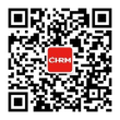By Marc Sotkiewicz and Edward W.Jensen
Over the past decade or so, a rallying cry for chief human resource officers has been HR transformation:Get close to the business focus less on basic HR transactions and focus more on adding business value.HR outsourcing has been one important aspect of this transformation, enabling many organizations to decrease their administrative and transactional burden.Even in those cases, however, true transformation of the retained HR function has been elusive.
Why isn’t HR transformation more successful, either in an outsourced or insourced environment? In many instances, HR directors are reluctant to give up transactional HR in the belief that transactions are an important link to the business. Another reason:Companies that leverage an outsourcing provider often fail to redefine new HR roles adequately enough instead of delivering new kinds of value, the retained function more often simply serves as a check on the outsourced organization.
In addition, transformation often takes so long that business units lose faith that HR really has anything to offer them. The experience of an HR executive at one US-based chemicals company is a case in point.This director had outsourced HR services, and these were being delivered well and efficiently, removing basic HR transactions from his general scope of control. But the roadmap he had laid out for transforming the retained HR organization was a long one. He was using competency modeling to tailor new HR services to workforces and to put new governance structures in place. The plan was sound, but the results were too long in coming, so the business units resisted making more long-term investments without assurance of tangible business outcomes.
Based on our experience and research, we believe a new roadmap to HR transformation is necessary—what Accenture calls a “portfolio-based” approach to creating business value through HR. The principles of this approach apply whether an organization is leveraging an outsourcing arrangement or reengineering an insourced function. The answer to serving the business better turns out to be deceptively simple. Start with what the business needs and configure HR to meet those requirements. Then use the data and business analytical methods found in other areas of the organization to deliver measurable results. In this way, HR transformation can proceed with an external focus rather than a focus solely on the creation of new HR roles, governance and jobs. The portfolio-based approach to HR transformation involves managing a journey of change, but it can be done.
HR and the sources of business dissatisfaction
The Accenture High-Performance Workforce Study which takes the biannual “pulse” of today’s business executives in terms of their perceptions of the HR and training functions—underscores the fact that today’s HR organizations are not successfully reinventing themselves for new and changing businessrequirements.
Are C-level executives satisfied with their HR organizations? More than half of the Executives we surveyed said they were. But what about very satisfied—is HR really delivering beyond expectations, creating value that makes senior management stand up and notice, and that gives business unit leads a reason to seek out HR to help support a major business need? That number drops to 11 percent.
What should HR do differently to achieve results that are more important to the business?Here are several things to consider:
1. Alter the balance between basic and value-added services.
One way to observe the lukewarm embrace between the business and HR is to look at the types of services HR delivers. On the one hand, there are basic HR operational processes—standard, business-enabling services such as employee support, compensation and benefits support, HR operations and so on. On the other hand, there are “business differentiating” processes such as workforce and performance management,strategy and organizational change, which are more concerned with talent management and organization management. Most HR organizations still place approximately 80 percent of their bets on the service and operations side of the scale. What those organizations need is a more balanced portfolio of investments, including specifying needs and solutions that the business might not readily identify on its own.
2. Improve HR’s reputation for architecting business solutions.
Traditionally, HR has contracted out the very solution design services that might enhance its standing with the business.This has minimized its own potential role as a strategist and solution architect. HR can regain credibility with its business customers by building new partner relationships that enhance HR’s role rather than replace it in the business.
3. Develop more business rigor.
The retained HR organization must become more adept at scoping and managing projects that deliver on-time and on-budget results based on a strong business case. Developing this kind of business rigor involves changing the “DNA” of the HR organization—enhancing program management capabilities, applying analytic and metric programs, minimizing project costs and amortizing project investments through knowledge reuse. By developing more business rigor, HR might even be able to contract with business units to share in the investments and the financial rewards related to workforce transformation.
A results-based, portfolio-driven approach
Typical HR transformations are still driven by an internal focus. They look to redefine roles of the retained HR team, and to redesign and redeploy the jobs of business partners, local HR and centers of excellence based on industry-standard definitions.
The new model for increasing HR effectiveness is not role-driven instead, it is resultsbased and portfolio-driven. Rather than changing roles and then seeking business initiatives to serve, do the opposite. First,go to the business units and develop a deep understanding of their needs and their toppriority workforce initiatives designed to deliver maximum value to the business.Then use those business initiatives to define and architect a workforce-focused portfolio of solutions that delivers results in the context of business needs. Structure the portfolio to deliver predictable, top- and bottom-line business results. Restructure HR roles, tools and service delivery as part of the high-priority workforce portfolio.
The portfolio might involve improved learning and development, or it could mean sales force transformation, or contractor management,or any number of things that are designed and put in place to improve productivity,reduce costs and improve the quality of the workplace.
Moving to this new portfolio approach to HR management will take time, to be sure.But the advantage is substantial: HR directors don’t have to ask their business partners to wait for an internal HR restructuring for the business leads to perceive HR’s value. Instead, HR can begin from the point of view that its mission is to support the most important business priorities out there.With a phased approach to transformation,HR executives can design and roll out a series of quick wins that give the HR team,and the business, confidence that this is theright way to go.
Moving forward
Executives setting out on this multi-stage journey typically begin with some form of diagnostic or assessment to set a baseline of operational effectiveness and current strategic relevance to the business. The outcome of that assessment then drives an action plan and roadmap toward the ultimate end state of transformed, integrated and business-relevant HR.
A results-based, portfolio-driven approach to effective HR will make the ultimate journey a shorter one. The new mission for HR executives is not to transform from the inside out, but the outside in. Figure out what the business needs and then configure yourself to that. Then, HR transformation can really take off because it can make an almost immediate impact.
HR should start from the business outcomes sought by business partners overseeing mission-critical workforces, and then develop the effectiveness and services required to support that work. By becoming a true business partner, HR also becomes a partner in the ultimate objective of achieving high performance.
 手机版|
手机版|

 二维码|
二维码|








